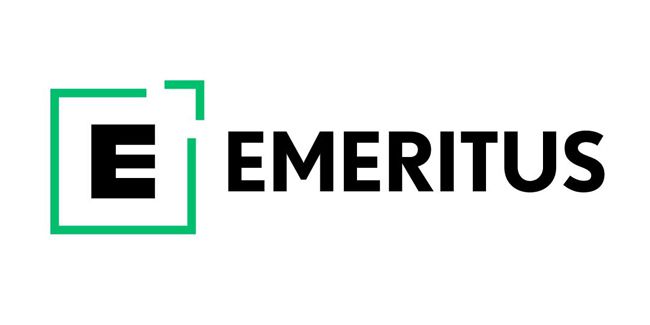If you’ve taken any instructional design courses, you’ve probably heard at least a little bit about the ADDIE model. After all, it’s the most well-known paradigm for developing education and instructional materials to increase performance, and studies have found it to be effective in achieving desired learner outcomes.
Put simply, the ADDIE Model in instructional design is a systematic framework consisting of five phases—Analysis, Design, Development, Implementation, and Evaluation—to guide the creation and refinement of educational programs and training materials.
But what exactly does that entail in practice?
In this article, I explore the ADDIE model in detail, including:
- What each stage in the ADDIE process involves
- Its importance in instructional design
- Advantages and disadvantages of using ADDIE in your learning environment
What is the ADDIE Model?
The ADDIE model is a continual process that instructional designers use to consider all variables that lead to the optimal outcome. The instructional design model is versatile enough to design any learning experience for any audience, from cellular biology lessons to corporate training programs.
Below are the five stages of the ADDIE model in detail.
1. Analysis
During analysis, you obtain the preliminary data that will drive the subsequent instructional design. Ideally, you should begin your investigation with a training needs assessment. It indicates whether or not training is a viable solution to the issue at hand.
The analysis phase mainly consists of the following steps:
- Developing learning profiles
- Selecting learning equipment and phases
- Researching and verifying learning sources
- Choosing delivery strategies
Before using ADDIE, you must first examine your training needs because you should only build an instruction if you determine it’s a solution to your problem. The analysis phase should answer questions such as:
- What is the goal of the training?
- Will the training help?
- What problem are you trying to fix?
- Where are you going to conduct your training?
- What type of behavioral change are you targeting?
The analysis grants you crucial information about your target audience and the behaviors they must display to perform better. The completed analysis should be your eLearning course’s heart and soul.
This analysis will be helpful as you progress through the ADDIE training model process.
You should have a plan for your eLearning course and understand your training needs at the end of the Analysis phase.
2. Design
Design is the phase of the ADDIE model that people refer to when talking about instructional design.
You develop the instruction itself during this phase, utilizing the analytic results to guide your design decisions. During this phase, you’ll often spend a lot of time speaking with subject matter experts (SMEs).
You use this raw data to create content that is tailored to the specific requirements. During this stage, the content you make is determined by the channel you choose to deliver the learning intervention.
The design phase mainly consists of the following steps:
- Storyboarding the design
- Scheduling and running tests with prototypes
- Designing online learning spaces
- Modifying your technology options
If you’re creating eLearning activities, for example, the output from this step could be a script or a production-ready storyboard.
If you’re planning a face-to-face intervention, the content for a facilitator guide and participant workbook could come out of this phase.
While storyboarding is beneficial, many projects do not give enough time for such depth. In the design phase, consider asking yourself the following questions:
- Will your course include visual and audio elements?
- How much time will learners take to complete the course?
- What tools are at your disposal to complete the training course?
- Does the trainee or learner have the skills to accomplish the learning goal?
You should have completed your course outline, overall design, and storyboard by the end of the Design phase.
3. Development
During the ADDIE development phase, you create the final instructional assets that the end users receive. In some ways, this phase is about translating the design phase’s results into the final product.
When creating an eLearning activity or video, you’ll probably need to extract assets from various places, such as audio files (narration, sound effects, background music, and so on), photos, videos, and raw text. This phase depends on the type of deliverable you’re working on, but it’s where you bring the final product to life.
You can offer the course to appeal to the audience by carefully selecting these features and using an ideal video presentation software. They should help you answer the following questions:
- Does the framework grab the reader’s attention?
- Are the learners engaged?
- Is there teamwork among learners?
The development process should be iterative so that you can test it to ensure it’s free of fundamental problems like grammar, spelling, and syntax.
Testing should also consider the course’s mechanics, while navigation is a crucial factor at this point.
The majority of learners’ issues are caused by how you create the course in the authoring tool.
The aggravating part is that it’s frequently something straightforward that the designer overlooks when they fail to test the course.
You should have finished your whole eLearning course by the end of the Development phase.
4. Implementation
You give the instructional interventions to the target audience during the implementation phase. It entails posting the courses or activities on the learning management system (LMS) and enrolling members from the target audience. You should also notify them that the courses are available and necessary in the case of eLearning.
The implementation stage includes gathering the target audience together at a time that is convenient for them.
You should also have a facilitator lead the experience for face-to-face sessions or virtual webinars. The implementation phase should generally answer the following questions:
- How are you handling possible errors when testing?
- Is your team capable of handling the implementation process, or do you need help?
- Can you track the progress and results successfully?
The instructional designer should keep an eye on the scenario to see if there are any teething problems. Conducting a course pilot before releasing the content to the entire group is one of the most excellent ways to avoid complications during the implementation phase.
Your eLearning course should be available in the LMS at the end of the Implementation phase for users to begin working on.
5. Evaluation
You measure the success of your training intervention on many levels during the evaluation phase.
Kirkpatrick’s model is the most widely used framework for training assessment. It states that you should measure the following during the evaluation phase:
- Learner reaction. How are learners reacting to the training intervention?
- Skills and knowledge. Are learners becoming more skilled and knowledgeable from the training program?
- Behavior and performance. Is there an increase in productivity after using the instructional materials?
The information you glean from the evaluation phase provides you with a detailed picture of the impact your intervention is having on the company.
Still, you can go one step further and undertake a return on investment (ROI) study to see if the costs of your endeavor resulted in a net financial gain.
The ADDIE learning model is unusual in that you can employ it in a continuous cycle as you constantly monitor learning outcomes.
In the final Evaluation process, for example, you may collect input. Then return it to the beginning of the Analysis phase, where it will begin an iteration of your end product.
You should have extensive information about what you need to review or improve for this or future courses and instructional materials at the end of the Evaluation phase.
Why is the ADDIE Model Important in Instructional Design?
Many instructional designers employ the ADDIE model for instructional design to provide technology-based training. It works well for developing professionally created, efficient, and high-quality distance learning programs.
Trainers and educators can use the ADDIE model’s methods to produce successful and efficient instructional designs for various educational programs.
The best strategy to educate trainers about ADDIE’s principles is the in-service training approach. It allows for return demonstrations and facilitation of in-person discussions, thereby emphasizing the trainer’s knowledge and skills.
Additionally, it prepares you for the successful application of ADDIE’s principles throughout your professional life.
As a result, the ADDIE learning model is widely accepted for corporate e-learning and training. It’s recognized as being extremely useful for sophisticated and large-scale teaching designs.
While the ADDIE training model is a widely used instructional design approach, it has its own set of advantages and disadvantages.
Advantages of the ADDIE model
Some people love the ADDIE model due to its flexibility, ease of modification, and ability to combine with other instructional design models.
Structure and flexibility
The ADDIE model for instructional design gives designers the framework to meet their studied objectives. It also provides flexibility to meet curriculum development and delivery motivations.
As a result, the organizers will give the most efficient and successful learner-centered experience possible.
Quality and effective designs
The ADDIE learning model helps trainers and instructional designers create more effective quality designs and clearly defined learning objectives.
It allows for structured and coherent content, and a measured and organized workload for educators and students with incorporated visualizations and media.
Easy to modify
You can change the ADDIE Model’s five phases at any time to better meet the needs of the user and to better reach desired learning outcomes. Each step may appear to be distinct, yet they are, in fact, intricately linked.
Developers can utilize one phase to inform the next, choosing which activities to complete in each stage.
The Analysis phase, for example, influences the design process, while the Design phase may trigger additional analysis.
Disadvantages of the ADDIE model
Although the ADDIE learning model has its advantages, it is frequently criticized for its overly-detailed approach and time to develop and apply it.
Time-consuming
During the first two phases of the ADDIE training model, you need a thorough up-front analysis which might take an extended period.
Furthermore, regular evaluation and post-testing that may yield little meaningful information can be a demanding task.
Overly-detailed
Processes and planning under this style are frequently so rigid that creativity becomes a hindrance.
Facilitators can learn from and adapt their preferred models as they use them.
Some believe that the model’s major problem is that it presumes you know everything you need to know before you start creating content.
Conclusion
The ADDIE training model has the potential to be a valuable tool in the development of learning experiences.
The model could be beneficial for guiding your instructional design process if you do everything correctly in the ADDIE model, that is:
- Allow for an iterative process
- Complete each stage before going to the next
- Pay attention to your original course objectives when creating instructional materials
- Act on feedback from your team, client, learners, and instructors during the training evaluation phase to improve your odds of meeting instructional goals
Understanding the ADDIE model and how it can be implemented into your work can be very useful when building your instructional design portfolio and furthering your career.
Want to increase your instructional design skills and learn even more about ADDIE and other key ID models?
You should seriously consider checking out the Professional Certificate in Instructional Design program from Emeritus.
This program gives participants a unique chance to learn the principles and methodologies of the field straight from the experts. You’ll gain the firsthand expertise you need to create high-quality, impactful learning solutions that really make a difference.
Whether you’re an educator looking to enhance your skills or a professional seeking to advance your career, this one-of-a-kind program can help you take the next step. It’s an intensive course that covers everything you need to know to be an effective instructional designer and a whole lot more.
You can learn more about the program and request a brochure at this link.
 Emeritus Professional Instructional Design Certificate | Online Certificate Course
Emeritus Professional Instructional Design Certificate | Online Certificate Course
Gain firsthand expertise in instructional design principles and methodologies through this unique Professional Certificate program. Create impactful learning solutions and improve people's ability to learn.
Have any questions about the ADDIE model? Leave a comment below and we’ll do our best to answer!


